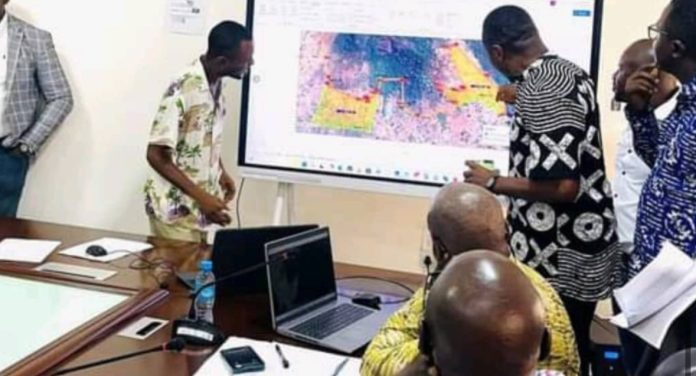AYV News, August 8, 2025

In a high-level meeting held by government officials, law enforcement agencies, local authorities, and environmental stakeholders reaffirmed their collective commitments to safeguarding the Western Area Peninsula National Park (WAPNP) and its surrounding green belt.
The session, spearheaded by a senior government official and backed by a directive from President Julius Maada Bio, focused on adopting a multisectoral approach to address the growing encroachment on the park and its surrounding green belt.
The core objective, as reiterated during the meeting, is to demarcate the park’s perimeter for parliamentary approval and long-term legal protection.
The meeting was held in response to alarming data indicating that since the last gazetting of the park in 2013, an estimated 13.19% of the protected area equivalent to approximately 17,892 hectares has been lost due to legal and illegal human activities.
Officials lamented that the encroachment poses a serious threat to the GUMA Dam, Freetown’s primary water source.
They asserted that the natural earth dam, which plays a critical role in the city’s water supply, is now at risk due to deforestation, illegal settlements, and land degradation within the catchment area.
Concerns were also raised pointing out that a structural failure of the dam could lead to catastrophic consequences along the spillway.
As part of its response, the government has poised to deploy a multi-pronged strategy involving the demolition of illegal structures within the protected zone, development of new regulations for current residents in restricted areas, and legal proceedings against parties involved in the unlawful sale or purchase of protected land.
Contrary to recent media reports suggesting that the government approved a significant reduction of the green belt, officials clarified that proposals for demarcation came from a consortium of experts across institutions.
Those proposals were notably informed by factors such as existing human settlements, disaster-prone zones, water catchments, and ongoing development projects, including TAF City and the Fish Harbor.
It was however confirmed that not all recommendations were accepted and that the final park boundary map would be determined following further field assessments.
Government representatives emphasized that while some settlements will face demolition, others may be subject to fines or legal penalties.
The overarching goal, they insisted, is to ensure the long-term sustainability of the environment and to safeguard future generations’ access to clean water and biodiversity.
Officials also sought to dispel public concern regarding key conservation sites, stating that while deforestation has accelerated in some areas, the Tacugama Chimpanzee Sanctuary remains untouched. Nevertheless, illegal logging, mining, and construction across other parts of the park continue to pose significant threats.
The meeting concluded with a call for nationwide cooperation, urging citizens, civil society, local authorities, and technocrats to play active roles in preserving Sierra Leone’s environmental heritage.
“This is a matter of national importance,” officials reechoed, admitting that “Protecting the Western Area Peninsular National Park is not just an environmental issue, it is about our water security, disaster preparedness, and the legacy we leave for our children.”

